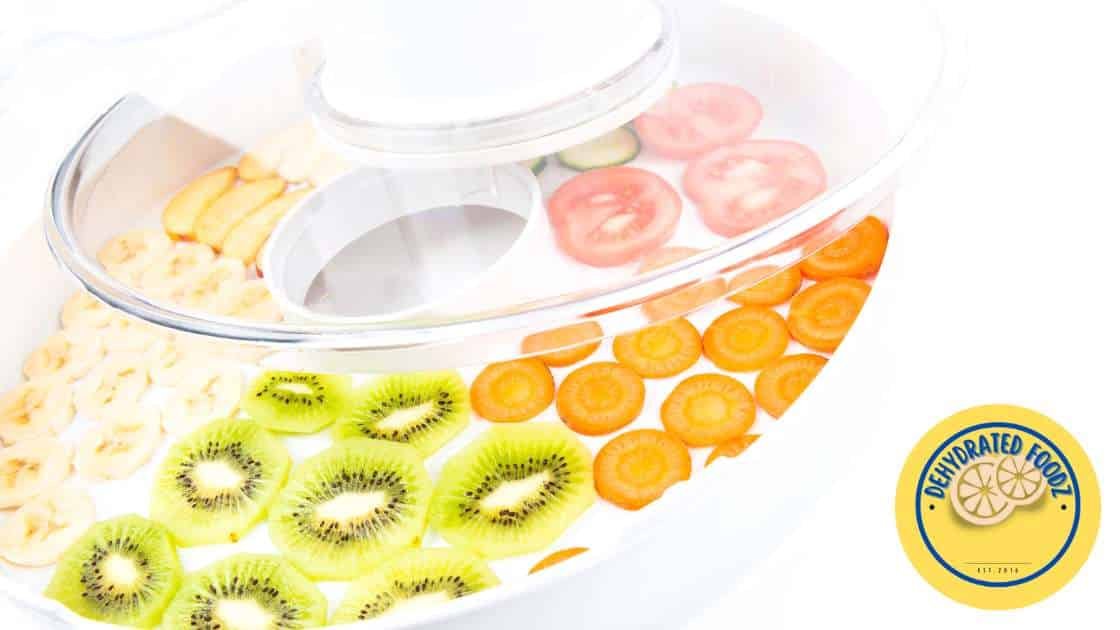Introduction to the Deni Food Dehydrator
The Deni food dehydrator offers a practical and reliable solution for dehydrating food. Manufactured by Deni, a trusted name in kitchen appliances, it provides an easy way to prepare dehydrated food at home.
From dried fruits to homemade jerky, the Deni food dehydrator expands dehydrating possibilities. It’s also a great budget tool for preserving food with its emphasis on nutritional retention and shelf-life.
Our review covers all aspects of the Deni dehydrator from design to functionality, useful for beginners and experienced users alike. Let’s start with the unboxing and setup.
Unboxing and Setup
As you take the first step into the world of food dehydration, the initial impression is crucial, and the Deni food dehydrator doesn’t disappoint. Opening the package, you’ll find it securely packaged with everything neatly in place. The packaging portrays a mix of thoughtfulness and professionalism, hinting at the quality of the product inside.
Along with the dehydrator itself, you’ll find a detailed and user-friendly instruction manual. The manual is a delight, offering clear setup instructions and useful suggestions for getting the most out of the device. Trust me, you’d be up and running in no time.
In terms of setup, the Deni food dehydrator is pretty straightforward – all you need to do is unpack it, wash the trays, put them back into the unit, and it’s ready for use. I must say, it was a breeze getting this machine ready for its first run.
Another point worth noting is that the dehydrator requires very little space. Don’t have a big kitchen? No issue, as it fits comfortably on most kitchen counters. It is also quite lightweight, which makes it easy to move around as needed.
In conclusion, the unboxing and setup of the Deni dehydrator is undeniably smooth. It echoes the product’s promise to make your food dehydration projects as effortless and fuss-free as possible.
Design and Build Quality
In every kitchen gadget, from simple to extravagant, the imperative of a solid design and build quality cannot be overstated. Made with firm yet lightweight plastic, the Deni food dehydrator sets an example in terms of its design aesthetic and robust construction.
The visual appeal of the Deni food dehydrator is striking, with its sleek, circular design that is made to complement any small kitchen countertop. While the exterior is predominantly white, the see-through case adds a touch of transparency, allowing a sneak peek into the dehydration process. This balance between style and functionality is commendable.
The build of the Deni food dehydrator is impressive as well. With its strong construction, it is designed to withstand good usage while delivering reliable performance. The five stackable trays are well-crafted and sturdy, designed to hold the weight of the food during the drying process. However, don’t let the robustness mislead you – this dehydrator is surprisingly lightweight, making it easy to move around the kitchen or store away when not in use.
Another noteworthy feature is the simple On/Off switch that is situated at the bottom front of the machine for easy access. The placement ensures you can readily switch the appliance on or off, a design element that is geared towards user convenience.
I’d also like to point out the use of food safe material in the construction of the Deni food dehydrator. By using this material in its build, Deni shows forethought in the safety and well-being of its customers.
In summary, the design of the Deni dehydrator manifests a perfect blend of aesthetic appeal, user-friendliness, and durability, while its robust build speaks of longevity and dependable performance. Undoubtedly, it exhibits a level of thoughtfulness and care we often miss in other kitchen gadgets.
Functionality and Features
The Deni food dehydrator stands out from the rest due to its simple to use function. Here’s a list outlining its several features:
- Compact design
- Energy-efficiency
- Quiet operation
- Ease of cleaning and maintenance
- 300 watts
- Adjustable for different item size
Dehydrating Performance
In terms of dehydrating performance, the Deni food dehydrator does have some hiccups, firstly, it does do the job but it is a bit slow. This can be due to the 300 watt power of the appliance. However, once you get the hang of its pace, you’ll find that the device effectively dehydrates a variety of food items, providing consistent results with minimal intervention.
Does It Have a Temperature and Time Control
No, the Deni food dehydrator does not come with an integrated timer or temperature control.
What are the Pros and Cons of Using the Deni Food Dehydrator?
An exploration of the Deni food dehydrator would be incomplete without a comprehensive review of its pros and cons. A balanced perspective aids potential users in making informed decisions and prepares them for what to expect.
Pros
There are several notable advantages to using the Deni food dehydrator, making it an indispensable tool in your kitchen galaxy. These include its versatility in accommodating a wide range of food items, its preservation of nutritional value in dehydrated foods, and its quiet operation. Not to mention, it’s remarkably energy efficient, easy to clean and maintain, and boasts commendable durability, promising you long service.
Cons
The downside is that the product does not have any adjustable thermostat or timer options, having this feature in a food dehydrator is a must have.
Cleaning and Maintenance
To clean the dehydrating machine, use a damp cloth for the base and handwash the trays. Avoid using abrasive materials to prevent scratching the surfaces. Regularly check for food residues to prevent any mold build-up. Make sure all parts are thoroughly dried before storing the dehydrator away.
Durability and Longevity
When it comes to durability, the Deni food dehydrator scores favorably. It is constructed with food-grade plastic materials that can withstand regular utilization, emphasizing its robustness and resistance against wear and tear. The construction seems solid, ensuring that it won’t succumb to cracks or breaks easily.
Comparison with Other Food Dehydrators
When considering whether the Deni food dehydrator is the best choice for you, it’s crucial to compare it to other popular food dehydrators on the market. Here’s an analysis of how it stands up against some of its key competitors.
Comparison Table
Comparison with Other Food Dehydrators
When it comes to purchasing a food dehydrator, there are several options in the market. Yet, not all dehydrators are created equal. To give you a deeper understanding, let’s compare the Deni food dehydrator against some popular models:
| Product | Trays | Wattage | Adjustable Thermostat | Adjustable Timer | Design | Material | Tray Material |
| Our Product Deni 7100 | 5 | 300W | No | No | Round | Food Grade Plastic | Plastic |
| COSORI CFD-N051-W | 5 expands to 7 | 350W | Yes | Yes | Round | Polypropylene | BPA Free Plastic |
| Magic Mill MFD-5000 | 5 | 240W | Yes | Yes | Rectangular | Stainless Steel | Stainless Steel Food Safe |
Customer Reviews and Ratings
Customers have said it is a great starter appliance, some customers have said the trays start to melt. The dripped juices tend to fall down into the electrical part of the machine. The overall ratings are 3.2 out of 5.
Price and Value for Money
When it comes to assessing the value for money of the Deni food dehydrator, one must consider the unit’s cost relative to its features, performance, and longevity. As expected, the price of the Deni 7100 dehydrator sits comfortably in the low-price range for food dehydrators, making it an economically-friendly choice for households on a budget or those new to food dehydration.
Conclusion: Is the Deni Food Dehydrator Worth It?
If starting from scratch with food dehydration, the Deni food dehydrator is a reliable choice. It provides an easy and efficient way to extend the shelf life of your foods while preserving their nutritional value. Designed for novice and expert users alike, this kitchen gadget is a valuable addition to any home. With its thoughtful features and simple design, the Deni dehydrator streamlines the process of food dehydration, thereby fostering healthier eating habits.
Tips and Tricks for Optimal Use
Utilizing the Deni food dehydrator to its full potential requires some useful tips and tricks. With these in your arsenal, you can ensure that you get the optimal use out of this device and achieve the best results with your dehydrating tasks.
Pre-Treatment of Food
Pre-treating your food items before dehydrating can significantly improve the outcome. For instance, blanching vegetables before dehydration can help to lock in nutrients and color. Some fruits can be soaked in a mixture of lemon juice and water to prevent browning.
Even Loading
For best results, always ensure that food items are spread evenly on the trays. This allows for a more uniform drying process, thus ensuring optimal dehydrating performance.
Rotation of Trays
Often, different trays will dehydrate at varying speeds. To counter this, it is beneficial to rotate the trays halfway through the dehydration process for even drying.
Proper Storage
After dehydrating your food items, it is pertinent to store them correctly. Placing them in airtight containers or vacuum-sealed bags helps to maximize their shelf-life. Also, store them in cool and dark places to preserve nutrients.
Temperature and Time
Keep in mind that each food item may require a different temperature and length of time for dehydration.
Patience is a virtue when it comes to food dehydration. It’s best not to rush the process. Slow and steady ensures that your food items are properly preserved and that the nutrients are well-locked in. Consider these tips and tricks to truly reap the benefits of your Deni dehydrator.
Recipes and Ideas for Dehydrating
Dehydrating food opens up a whole new world of culinary possibilities and that’s especially true when you’re using the Deni food dehydrator. Its ease-of-use and efficient dehydration process allows you to try you must try making with your Deni 7100 food dehydrator. Choose from beef, chicken, turkey or even fish, thinly sliced and marinated to your liking, then dehydrated until it reaches the desired chewiness. Homemade jerky gives you control over the flavor and eliminates the use of preservatives found in store-bought options.
Where to Buy
If you’re considering purchasing the Deni food dehydrator, there are several locations where you can find this handy kitchen gadget. Keep in mind that the availability may vary depending on the location and the timing. Here are some recommendations for places to buy:
- Online marketplaces like Amazon and eBay typically stock the Deni food dehydrator.
- Lastly, appliance stores and big-box retailers like Home Depot and Lowe’s may also carry the product.
FAQ
In this FAQ section, we’ll explore commonly asked questions regarding the Deni food dehydrator. These answers should provide additional information, helping to clarify any uncertainties you may have about the appliance.
How many trays does the Deni Food Dehydrator come with?
The Deni food dehydrator usually comes with five trays.
Does it have an automatic shut-off feature?
No, the Deni food dehydrator does not have an automatic shut-off feature. Users need to monitor the dehydration process and switch the unit off manually once it’s done.
Can I use it to make jerky?
Yes, the Deni food dehydrator is excellent for making jerky. Its adjustable temperature allows for proper drying of meat for jerky.
Are the trays dishwasher safe?
No, the trays of the Deni food dehydrator are not dishwasher safe, meaning cleaning and maintenance are done by hand.
What is the size of the Deni food dehydrator?
The Deni food dehydrator may be compact, but it is not to be underestimated. Its dimensions are approximately 17inches high and 15.75 inches in diameter, making it an ideal size for those who want to save on counter space. Despite its compact size, it can still efficiently dehydrate a good amount of food.


